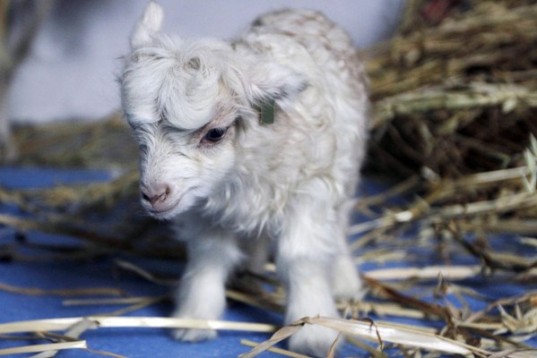
The Kashmir region of south Asia is economically dependent on cashmere (the homophonic name is not a coincidence). But populations of pashmina goats, which produce the expensive wool, have been dwindling. So scientists at Sher-i-Kashmir University decided to hurry the process along, cloning a pashmina goat named Noori with little more than a microscope and crossed fingers.
Noori is the first cloned pashmina goat in the world (though she’s hardly the first cloned animal), and the researchers don’t think she will be the last. The process they used, called “handmade” cloning, is comparatively cheap, requiring almost no specialized equipment. It’s fairly simple, too, as these things go — scientists basically just slice cells carefully under a microscope, then stick them together with other cells using electrical current. The Chandigarh Tribune is reporting that the researchers think they could make Noori a sister within six months.
It may seem a little ethically iffy to make lab-grown animals just to shore up a flagging economy. But on the other hand, we’re also talking about repopulating a dwindling species. Handmade cloning could be a relatively cheap way for scientists in less-developed countries to help pull critically endangered native animals back from the brink of extinction. It’s not exactly natural — but neither are the threats many species face.
It is probably best that we start with goats and sheep and whatnot, though. Let’s get the whole “hideous progeny turning evil and/or destroying us for our scientific hubris” potential problem worked out with ruminants, before we move on to leopards and wolverines.




